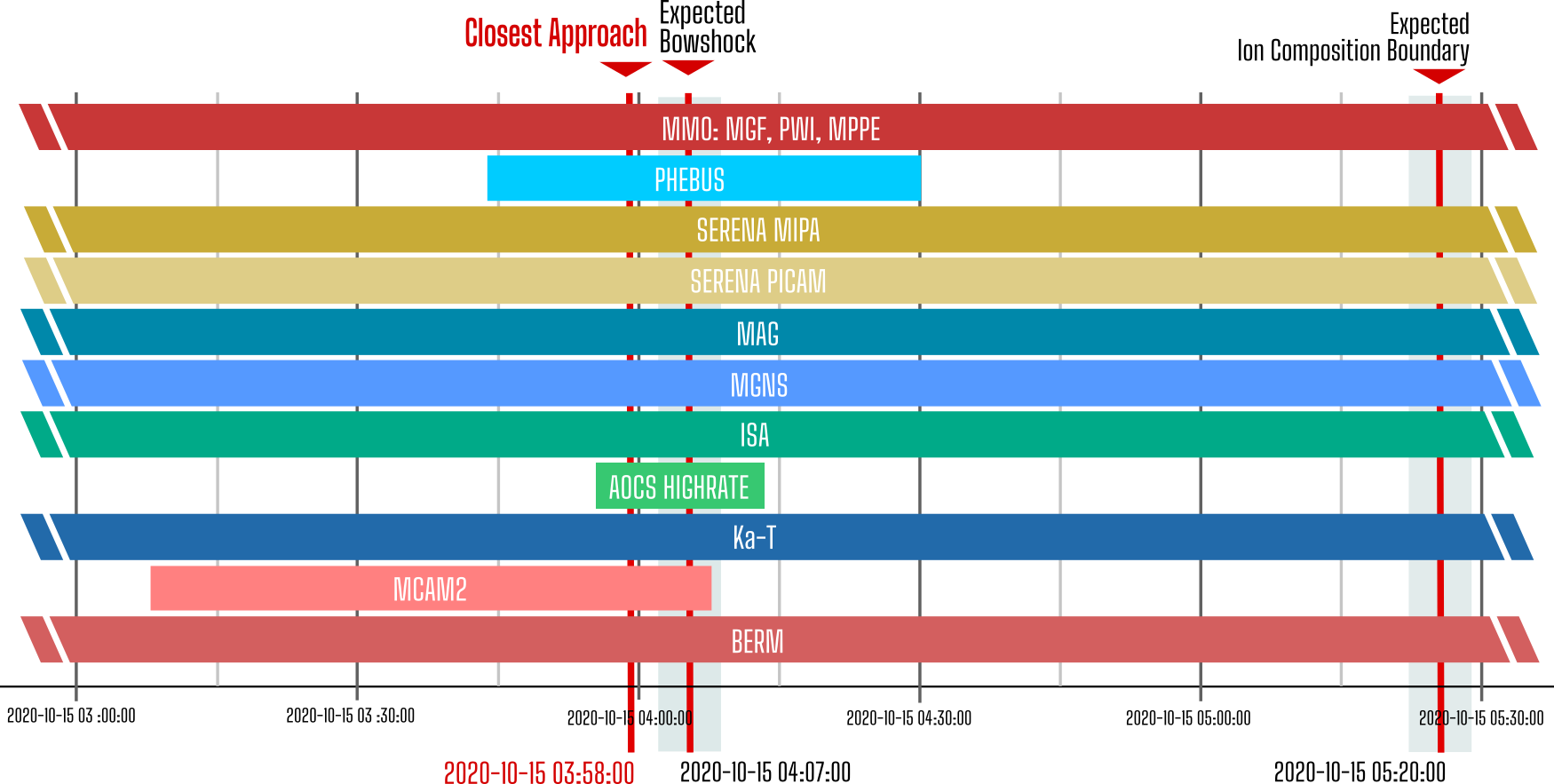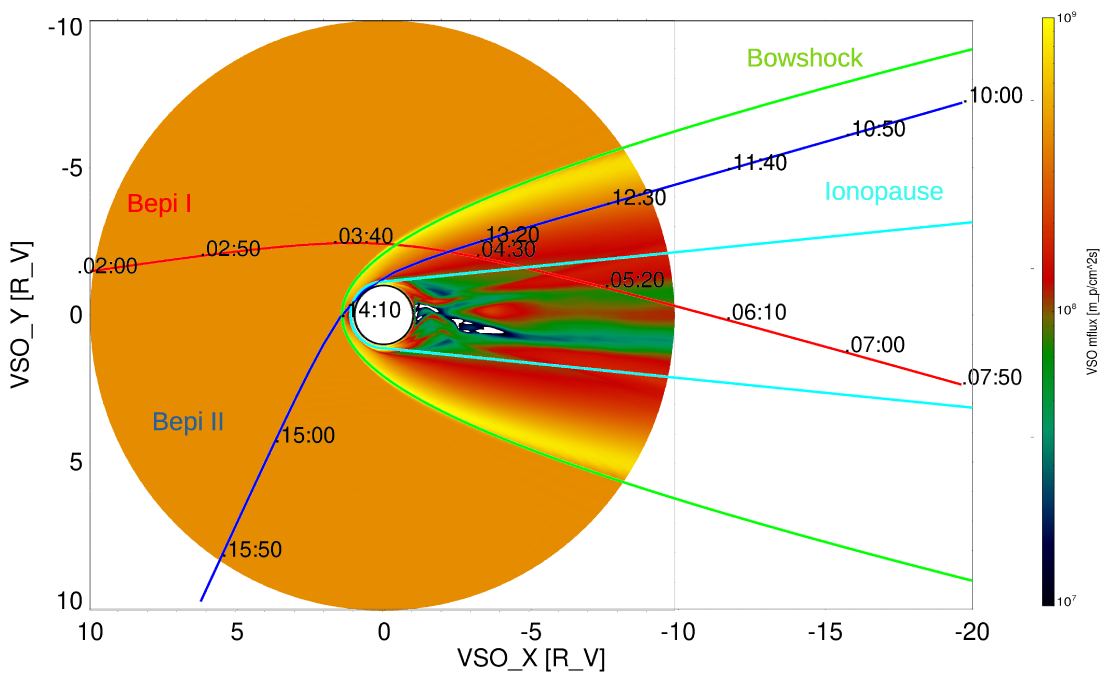

On October 15th 2020 at 3:58 UTC, BepiColombo will perform its first flyby at Venus. Scientific operations are already began and will go on until October 18th 23:59 UTC when MIPA will stop acquiring data.
BepiColombo will approach the planet from the dayside and – given the retrograde rotation of Venus - it will have the closest approach on the planetary evening side (dusk terminator), shortly before the bowshock crossing.
The operating instruments are: MAG, MERTIS, MGNS, MORE, ISA, PHEBUS, SERENA/MIPA and /PICAM, SIXS and BERM onboard MPO and MGF, MPPE and PWI onboard MMO.
A timeline is provided here below:

PICAM and MIPA will operate from 4 hours before the closest approach. PICAM will be ON up to the afternoon of October 16th, while MIPA will continue to operate up to the 18th.
The flyby trajectories of the two BepiColombo at Venus on October 15th 2020 (Bepi I,red) and on August 10th 2021 (Bepi II, blue) are shown in the figure below. It shows the projection onto the VSO X-Y plane (-Y up); numbers plotted along the orbits give the expected universal time. Green and cyan profiles show average positions of bow shock and ion composition boundary respectively (as modeled after Martinecz et al., 2009).
Simulated ion mass fluxes are also mapped in the background as derived by using the code PLUTO (Mignone et al., 2007, 2012 http://plutocode.ph.unito.it/ ) for average solar wind conditions (orange circle, corresponding to a value of mass flux of about 5 10^8 p/cm^2 s), and ionospheric parameters as in the colorbar to the right.
